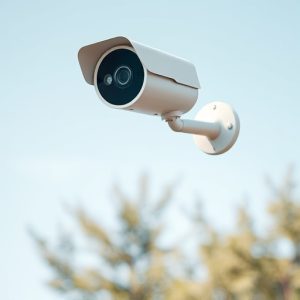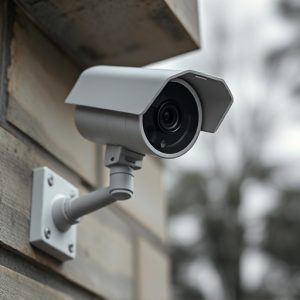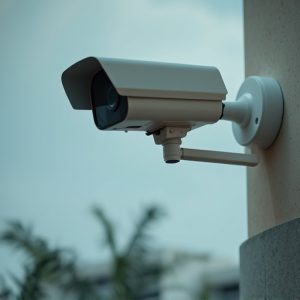Mastering Discreet Camera Placement: Optimal Fake Security Mounting Brackets
Fake security camera mounting brackets provide a cost-effective way to enhance security, acting as p…….
Fake security camera mounting brackets provide a cost-effective way to enhance security, acting as powerful deterrents without the high costs of comprehensive systems. The best placement mimics genuine installations, focusing on clear lines of sight near entry points and avoiding natural vision obstacles. Discreet wall brackets are ideal for indoor use while ceiling or pole mounts suit outdoor settings. Strategically positioning cameras in visible yet unexpected locations prevents crime without alerting potential intruders. Regularly test bracket security to maintain the system's integrity.
Fake security camera mounting brackets have become a popular way to enhance home or business security while maintaining a discreet appearance. Understanding the nuances of these brackets is crucial for optimal placement and ensuring your system’s effectiveness. This article explores key factors, common installation areas, bracket types, and best practices to help you achieve the best placement for fake security cameras, providing a robust yet unassuming layer of protection.
- Understanding Fake Security Camera Mounting Brackets
- Key Factors to Consider for Optimal Placement
- Common Areas for Discreet Camera Installation
- Types of Mounting Brackets and Their Uses
- Best Practices for Securing Your Fake Security System
Understanding Fake Security Camera Mounting Brackets
Fake security camera mounting brackets are designed to provide a realistic appearance and optimal placement for surveillance cameras, especially in areas where an actual security system is either impractical or desired. Understanding these brackets is crucial when aiming to deploy fake cameras effectively. These brackets mimic the look of genuine security equipment, often made from materials like metal or plastic to resemble real camera bodies and mounts.
The best placement for fake security cameras is in areas that require a sense of security without the need for an extensive surveillance system. They can be strategically positioned on walls, ceilings, or even in trees to deter potential criminals, acting as a visual deterrent without the associated costs and complexities of a full security setup. This clever use of fake mounting brackets allows property owners to enhance their home’s or business’s safety while keeping budgets in check.
Key Factors to Consider for Optimal Placement
When considering the best placement for fake security cameras, several key factors should guide your decision to ensure optimal effectiveness. First and foremost, understand that these devices are designed to mimic real security equipment, so their placement should align with genuine camera installations. This means strategically positioning them in areas where natural vision obstacles are minimal, offering clear lines of sight. Windows, doors, and entry points are prime locations, but be mindful of potential blind spots created by overhanging branches, architectural elements, or nearby objects.
Additionally, take into account the lighting conditions at different times of day. Ensure the camera’s view isn’t obstructed during peak hours when natural light is abundant. The goal is to make these fake cameras as convincing as possible, so thoughtful placement relative to light sources and obstructions will enhance their overall impact as deterrents.
Common Areas for Discreet Camera Installation
When considering the best placement for fake security cameras, discretion is key. These devices are designed to deter potential intruders without drawing unnecessary attention. Common areas for discreet camera installation include entryways and exits, such as front doors, garage doors, and side gates. Strategically placing these faux cameras near windows or in corners can make them less conspicuous while still offering a clear view of the surroundings.
Additional high-value spots include outdoor lighting fixtures, fence posts, or even on trees and shrubs. These locations provide ample coverage while blending seamlessly with their environment. Remember, the goal is to create an illusion of enhanced security without compromising aesthetics, making these hidden camera spots ideal for both residential and commercial properties.
Types of Mounting Brackets and Their Uses
Fake security cameras come with various mounting brackets designed for optimal placement and visual appeal. The most common types include wall-mounted, ceiling-mounted, and pole-mounted brackets. Wall-mounted brackets are ideal for indoor use, offering discreet placement near doors, windows, or corridors. Ceiling-mounted options are versatile, suitable for both indoor and outdoor settings, providing a panoramic view with little obstruction. Pole-mounted brackets are perfect for outdoor applications, allowing security cameras to be strategically positioned at elevated heights for enhanced visibility.
When choosing the best placement for fake security cameras, consider factors like lighting, angles, and potential blind spots. Wall-mounted brackets can provide clear line-of-sight without drawing excessive attention, while ceiling-mounted cameras offer a more subtle presence yet deliver comprehensive coverage. Pole-mounted setups are ideal for areas requiring long-range surveillance or where obstructions might limit other mounting options.
Best Practices for Securing Your Fake Security System
When considering the best practices for securing your fake security system, placement is key. The best placement for fake security cameras should mimic a genuine security setup while maintaining an element of surprise. Mounting brackets should be placed in strategic locations that offer clear lines of sight and cover common entry points, such as doors, windows, and walkways. Avoid obvious areas where potential intruders might anticipate the presence of cameras.
To enhance the realism of your fake security setup, consider using a mix of visible and hidden cameras. Visible cameras act as deterrents by signaling that the area is under surveillance. Hidden cameras can capture unexpected moments or confirm the presence of actual intruders. Ensure all brackets are securely fastened to solid surfaces, such as walls, ceilings, or even strategically placed dummy pipes or electrical boxes. Regularly test the stability and integrity of your mounting system to prevent any accidental dislodging that could compromise the security of your fake setup.
When it comes to the best placement for fake security cameras, understanding the right mounting brackets is key. By considering factors like discretion, optimal viewing angles, and sturdy installation, you can create an effective yet unnoticeable security system. The right bracket selection ensures your camera covers crucial areas while blending seamlessly into the environment, providing a realistic deterrence against potential threats. With proper placement and secure mounting, fake security cameras can serve as a powerful visual tool to enhance home or business safety without compromising aesthetics.


